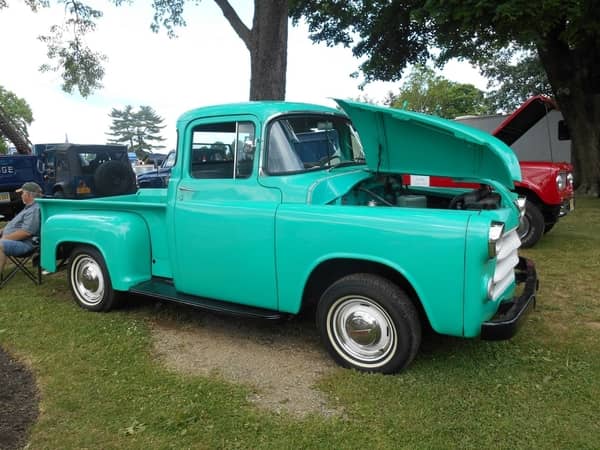Trucks were designed to carry heavy things from point A to point B. This body style is not only excellent for hauling but has become a preferred vehicle choice for many truck enthusiasts. The design of the vehicle that drives its performance also limits its aerodynamics, which results in poor gas mileage compared to other vehicles.
Does lowering a truck improve gas mileage? Lowering a truck will slightly improve its gas mileage (under two miles per gallon because it brings the wheels closer to the front of the car to prevent air from passing. This results in a smaller frontal area on the truck, which is more aerodynamic. Gas mileage savings are more apparent in highway driving over city driving.
Lowering your truck is one of the few ways you can improve gas mileage. This may impact the truck’s performance and require you to make additional changes to your tires and lift system. But, if improved fuel economy is your goal, these changes can help your vehicle to improve its fuel efficiency. Read on to learn more about lowering a truck to improve gas mileage.

Why Does Lowering a Truck Affect Miles Per Gallon (MPG)?
Lowering a truck decreases the ability for air and wind to pass underneath the car as opposed to around it. When a vehicle can move more efficiently through the air without increased acceleration, this is known as being aerodynamic. The more aerodynamic a vehicle is, the greater its fuel efficiency will be.
Lowering a truck positively affects fuel economy in multiple ways:
- Decreases surface area of car front: By lowering the truck, specifically the front of the truck, the entire area becomes smaller, making it much easier for air to pass around the vehicle while in motion. This improves the aerodynamics of the vehicle.
- Fineness ratio: The fineness ratio compares the length to width of a vehicle. When the car is lowered, the overall size of the width and front area is decreased, which drives a higher fineness ratio. Higher ratios typically result in faster movement with less force.
- Easier acceleration: The easier it is to break through wind and air with the car, the more effortless acceleration becomes. The lower center of gravity results in greater control of the vehicle, where the engine does not have to work as hard for desired speeds.
- Better brake response time: When there is a more balanced center of gravity, a truck can brake more quickly and efficiently. This improves the overall function for non-lifted trucks as excessive idling or stopping can hurt MPG.
Trucks are not designed to be aerodynamic, but changes to their height can help to improve efficiency in all of the categories mentioned above. Changes in truck height will not have a dramatic impact on your MPG as the style and shape of the vehicle cannot be changed. These minor adjustments will also result in minor fuel efficiency changes.
How Much Does Lowering A Truck Affect MPG?
The results in improved MPG will not be dramatic by only lowering your truck as these vehicles are not designed to be aerodynamic. You can expect an increase in MPG to be at most 2, with most changes falling in between 0.5-1 MPG increases. The closer the truck is to the ground, the more aerodynamic it will be, but this may also impact performance and not be feasible.
Trucks that have low gas mileage from the start are most likely to see the most significant improvement in that small range mentioned above. Modern trucks are being built with fuel efficiency in mind, placing many in the 20 MPG for city and 25 MPG for highway driving. Those with higher MPGs are more likely to be already optimized for fuel-efficiency.
Older trucks may benefit the most from lowering, where decreasing the front height of the vehicle can make one of the most considerable differences. Full-sized trucks are designed to be lifted off the ground so they can haul heavy loads and be driven off-road if needed. If these trucks are lowered, you will also need to change the size and type of tires to improve traction.
Keep in mind that lowering a truck may help make a minor contribution to improved gas mileage, but it could also result in poorer performance. This can make the engine work harder to carry heavier loads and end up using more gas for the engine to accelerate.
How to Improve Gas Mileage on a Truck?
While lowering the vehicle will have a small impact on improving the gas mileage, there are other steps you can take to improve the overall MPG of your truck. The following are some actions you can take to further improve gas mileage:
- Lift Kit: The weight and size of your lift kit will impact gas mileage as more substantial kits increase the overall weight of the vehicle. Heavier trucks make the engine work harder and result in decreased gas mileage. Look for a kit that balances performance to weight.
- Tire Type: Lifted trucks have tires with greater traction that are best for off-road performance. When you lower the vehicle or want to improve fuel efficiency, less traction is best.
- Load Size: Carrying heavy loads and cargo will increase the weight of the vehicle and decrease MPG. This is unavoidable if you consistently need to move things, but it is vital to keep in mind as another way to increase fuel efficiency.
- Air Dams: An air dam is a stiff strip of plastic placed under the bumper of the car that reduces drag on the truck. Instead of the air being passed below, then into the bottom of the truck, it is redirected downward to increase the aerodynamics.
- Belly Pan: To reduce drag on a truck, a belly pan is a sheet of material that is attached to the underside of the vehicle to direct air away from the ‘belly’ of the truck and move the air in a straight path out the back.
- Grill Block Off: A popular gas mileage solution for trucks is to install a grill block off. As the name states, this device will limit the amount of air that can enter the engine area through the front grills.
Taking advantage of a few of these gas mileage increasing strategies at the same time can improve your MPG much more effectively than only one modification. You may find that these tips are more useful for improving gas mileage than the effort it will take to lower a truck, especially if it limits performance on a full-sized truck.
While you can expect to see around a 1-2 MPG increase with the lowering of a truck, this number can become more consistent when applying other modifications at the same time. The tradeoff in lowering the truck is you may not achieve increased performance results in hauling, off-roading success, or the desired aesthetic that is often sought after in a lifted truck.
Lowering a Truck to Improve Gas Mileage
If you are looking for any improvement in aerodynamics, lowering the front of your truck will help, but the difference is often quite minimal. Consider the additional options mentioned in this article for more noticeable results. While trucks are not designed to be the most fuel-efficient, more significant advancements in body style and configuration have improved truck choices.

Older and less efficient trucks will often see more noticeable differences when alterations to height are made versus the newer models, which are already designed to be at an ideal height for performance as well as optimal fuel efficiency.
If you’re thinking of different ways to accessorize your truck or make it more functional, consider checking out my recommended accessories page. I spent a good amount of time picking out mods that can be useful for most pickup trucks.

